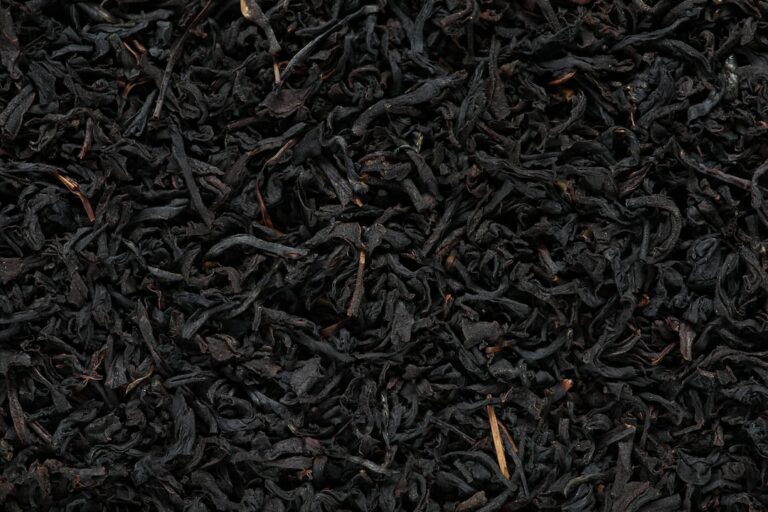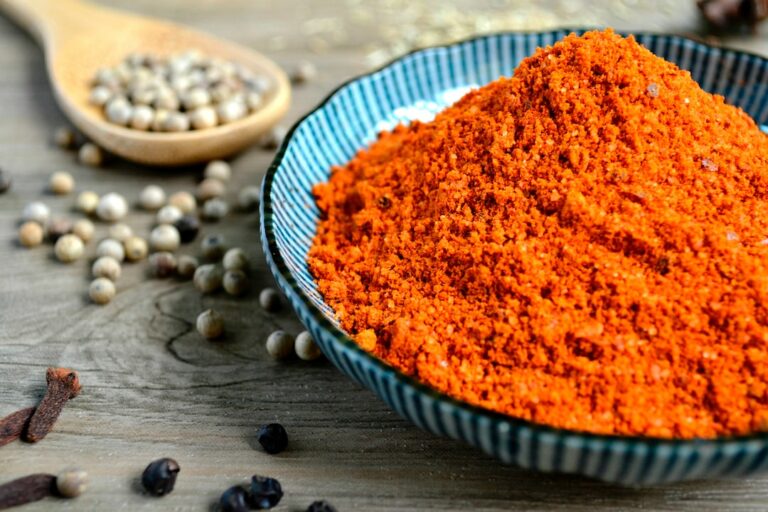Introduction
What is sedating tea?
Sedating tea refers to a type of herbal medicine that has calming and relaxing effects on the body and mind. It is commonly consumed to promote sleep, reduce anxiety, and relieve stress. However, it is important to be aware of the potential side effects that may arise from the use of sedating tea. Some individuals may experience drowsiness, dizziness, or an upset stomach. Therefore, it is recommended to consult with a healthcare professional before incorporating sedating tea into your daily routine.
Benefits of sedating tea
Tea has been consumed for centuries for its various health benefits. One of the notable benefits of tea is its sedating properties. Sedating tea can help promote relaxation and reduce anxiety. It contains certain compounds, such as L-theanine, that have been found to have calming effects on the brain. Additionally, sedating tea can improve sleep quality and aid in insomnia management. Some popular sedating teas include chamomile, lavender, and valerian root. These teas are known for their soothing properties and can be enjoyed before bedtime to promote a restful night’s sleep.
Types of sedating tea
Sedating tea can be a great way to unwind and relax after a long day. There are several types of sedating tea that can help promote a sense of calm and tranquility. One popular type is chamomile tea, which is known for its soothing properties. Another option is valerian root tea, which has been used for centuries as a natural sleep aid. Passionflower tea is also commonly used for its calming effects. Lastly, lavender tea is known for its ability to promote relaxation and reduce anxiety. So, whether you’re looking to unwind before bed or simply want to enjoy a moment of tranquility, there are plenty of sedating tea options to choose from.
Chamomile Tea

How does chamomile tea sedate you?
Chamomile tea is known for its calming properties and is often used as a natural remedy for inducing sleep and relaxation. The sedative effects of chamomile tea can be attributed to its rich content of flavonoids, specifically apigenin. Apigenin binds to specific receptors in the brain, promoting a sense of calmness and reducing anxiety. This natural healing technique has been used for centuries to promote restful sleep and alleviate stress. Incorporating chamomile tea into your bedtime routine can help you relax and prepare for a good night’s sleep.
Other benefits of chamomile tea
Chamomile tea is not only known for its sedative properties, but it also offers a range of other benefits. One of the main advantages of chamomile tea is its ability to promote relaxation and reduce anxiety. The tea contains compounds that have a calming effect on the body, helping to soothe nerves and promote a sense of calm. Additionally, chamomile tea has anti-inflammatory properties, which can help to reduce pain and inflammation in the body. It is also a natural remedy for digestive issues, such as bloating and indigestion. The antioxidants present in chamomile tea can help to boost the immune system and protect against various diseases. Overall, incorporating chamomile tea into your daily routine can provide numerous health benefits and contribute to your overall well-being.
Precautions when consuming chamomile tea
Chamomile tea is a popular natural medicine known for its sedative properties. It has been used for centuries as a remedy for insomnia and anxiety. However, it is important to take certain precautions when consuming chamomile tea. While generally considered safe, some individuals may experience allergic reactions to chamomile. It is also important to note that chamomile tea may interact with certain medications, such as blood thinners and sedatives. Therefore, it is advisable to consult with a healthcare professional before incorporating chamomile tea into your routine. Additionally, it is recommended to start with a small amount and gradually increase the dosage to assess your tolerance and response to the tea. By taking these precautions, you can safely enjoy the benefits of chamomile tea as a natural sedative.
Valerian Root Tea

How does valerian root tea sedate you?
Valerian root tea is known for its sedative properties. It contains compounds that have a calming effect on the nervous system, promoting relaxation and sleep. The main active component in valerian root tea is valerenic acid, which increases the levels of gamma-aminobutyric acid (GABA) in the brain. GABA is a neurotransmitter that helps regulate brain activity and promote feelings of calmness. Other important compounds in valerian root tea include valepotriates and isovaltrate, which also contribute to its sedative effects. Drinking valerian root tea before bedtime can help induce sleep and improve sleep quality. It is important to note that while valerian root tea can be effective in promoting relaxation and sleep, it may not be suitable for everyone. It is recommended to consult with a healthcare professional before using valerian root tea as a sedative.
Other benefits of valerian root tea
Valerian root tea offers several other benefits apart from its sedative properties. One of the key benefits of valerian root tea is its ability to promote relaxation and reduce anxiety. It contains compounds that have a calming effect on the nervous system, helping to alleviate stress and tension. Additionally, valerian root tea has been found to improve sleep quality, making it an effective natural remedy for insomnia. This herbal tea also has anti-inflammatory properties and can help relieve pain and discomfort. Moreover, valerian root tea may have positive effects on digestive health by soothing the digestive system and reducing gastrointestinal issues. Overall, incorporating valerian root tea into your daily routine can provide numerous health benefits and contribute to your overall well-being.
Precautions when consuming valerian root tea
Valerian root tea is a natural remedy that is known for its sedative properties. However, it is important to take certain precautions when consuming this tea. One of the key precautions is to be aware of non-antibiotic treatments. These treatments can have different effects on individuals, so it is important to consult with a healthcare professional before incorporating them into your routine. Additionally, it is important to follow the recommended dosage and not exceed it, as excessive consumption can lead to adverse effects. By being cautious and informed, you can safely enjoy the sedating benefits of valerian root tea.
Lavender Tea

How does lavender tea sedate you?
Lavender tea is known for its calming properties and is often used as a natural remedy for anxiety and insomnia. The sedative effects of lavender tea are attributed to the presence of compounds such as linalool and linalyl acetate, which have been found to promote relaxation and reduce stress. These compounds interact with the neurotransmitters in the brain, promoting a sense of calmness and tranquility. Additionally, lavender tea has been found to increase the production of GABA, a neurotransmitter that helps regulate anxiety and promotes sleep. Drinking lavender tea before bedtime can help induce a state of relaxation and improve the quality of sleep. It is important to note that while lavender tea can have sedative effects, individual responses may vary, and it is always recommended to consult with a healthcare professional before incorporating it into your routine.
Other benefits of lavender tea
Lavender tea has been used in traditional medicine for centuries due to its calming and sedative properties. In addition to its ability to promote relaxation and sleep, lavender tea offers a range of other benefits. It is known to help alleviate anxiety, reduce stress levels, and improve mood. The tea also has antioxidant properties, which can help protect the body against free radicals and promote overall health. Furthermore, lavender tea has been found to aid digestion and relieve stomach discomfort. With its numerous health benefits, lavender tea is a popular choice for those seeking natural remedies and a soothing beverage.
Precautions when consuming lavender tea
Lavender tea is known for its calming properties and is often used as an herbal remedy for relaxation and stress relief. However, it is important to take certain precautions when consuming lavender tea. While lavender tea is generally safe for most people, it is recommended to consult with a healthcare professional before incorporating it into your daily routine, especially if you are pregnant, breastfeeding, or have any underlying medical conditions. Additionally, it is important to be mindful of the dosage and not exceed the recommended amount. If you experience any adverse reactions or have any concerns, it is best to discontinue use and seek medical advice. When searching for herbal remedies for healing, lavender tea can be a beneficial option, but it is essential to prioritize your safety and well-being.
Passionflower Tea

How does passionflower tea sedate you?
Passionflower tea is a natural anxiety medication that has been used for centuries to promote relaxation and calmness. Its sedative effects are attributed to the presence of certain compounds, such as flavonoids and alkaloids, which interact with the central nervous system. These compounds help to increase the levels of gamma-aminobutyric acid (GABA) in the brain, a neurotransmitter that has a calming effect. By increasing GABA levels, passionflower tea can help to reduce anxiety and promote a sense of tranquility. Additionally, passionflower tea has been found to have sleep-inducing properties, making it beneficial for those struggling with insomnia or restlessness. Overall, passionflower tea is a natural and effective way to promote relaxation and sedate the mind and body.
Other benefits of passionflower tea
Passionflower tea has several other benefits in addition to its sedative properties. One notable benefit is its ability to alleviate hot flashes. Hot flashes are a common symptom experienced by many women during menopause, characterized by sudden and intense feelings of heat and sweating. Drinking passionflower tea can help reduce the frequency and severity of hot flashes, providing relief and improving overall quality of life. Studies have shown that passionflower tea contains compounds that have a calming effect on the body, which can help regulate body temperature and reduce the intensity of hot flashes. Incorporating passionflower tea into your daily routine may be a natural and effective way to manage hot flashes and improve your well-being.
Precautions when consuming passionflower tea
When consuming passionflower tea, it is important to take certain precautions to ensure a safe and enjoyable experience. One important precaution to keep in mind is the potential for mercury contamination in some passionflower tea products. Mercury is a toxic heavy metal that can have harmful effects on the body, especially when consumed in high amounts. Therefore, it is crucial to choose passionflower tea products that undergo rigorous testing for mercury removal. By selecting teas that have been certified as mercury-free, you can reduce the risk of exposure to this dangerous substance and enjoy the calming effects of passionflower tea with peace of mind.
FAQ (Frequently Asked Questions)

Can sedating tea be addictive?
Sedating tea can be a soothing and relaxing beverage to enjoy, but can it be addictive? The answer is not straightforward. While tea itself is not addictive, some sedating teas may contain substances that can create a dependency over time. One such tea that is often associated with sedation is ginger tea. Ginger tea has been known for its calming properties and is believed to promote better sleep. However, it is important to note that excessive consumption of ginger tea for kidney function may have adverse effects. It is always recommended to consume sedating teas in moderation and consult with a healthcare professional for personalized advice.
Are there any side effects of sedating tea?
There are generally no significant side effects associated with sedating tea. However, it is important to note that individual reactions may vary. Some people may experience drowsiness or grogginess after consuming sedating tea, especially in larger quantities or if they are sensitive to its sedative properties. It is advisable to start with a small amount and gradually increase the dosage to assess tolerance and avoid any potential adverse effects. Additionally, it is recommended to consult with a healthcare professional before incorporating sedating tea into your routine, particularly if you have any underlying health conditions or are taking medications that may interact with its sedative properties.
Can sedating tea be used as a sleep aid?
Sedating tea has been used for centuries as a natural remedy for promoting sleep and relaxation. However, its effectiveness as a sleep aid may vary depending on the individual and the type of tea consumed. While some teas, such as chamomile and valerian root, are known for their calming properties, others like green tea and black tea may have a more stimulating effect. It is important to note that sedating tea should not be relied upon as the sole method for improving sleep. Incorporating other brain rejuvenation methods, such as maintaining a consistent sleep schedule, practicing relaxation techniques, and creating a sleep-friendly environment, can also contribute to better sleep quality and overall well-being.












































